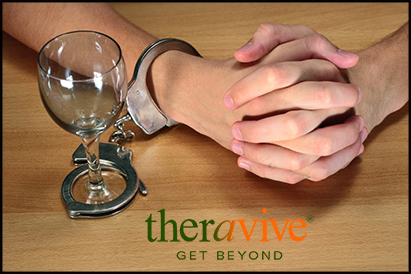 Humans are fascinating, and sometimes baffling creatures. Psychologists have developed multitudes of theories about why we do the things we do. Their research helps us understand the connections between our thinking, our behavior, and our emotions. For example, why do we help a stranger even when it puts us in danger? Why do we do things that we know are bad for us? Why do we say one thing, and then do another? In addition to trying to answer questions like these, psychological research can also to help behavioral health professionals develop more effective treatments for mental illness and emotional distress.
Humans are fascinating, and sometimes baffling creatures. Psychologists have developed multitudes of theories about why we do the things we do. Their research helps us understand the connections between our thinking, our behavior, and our emotions. For example, why do we help a stranger even when it puts us in danger? Why do we do things that we know are bad for us? Why do we say one thing, and then do another? In addition to trying to answer questions like these, psychological research can also to help behavioral health professionals develop more effective treatments for mental illness and emotional distress.
Understanding Cognitive Dissonance
One example of this type of psychological research is the studies originally done by Leon Festinger in the 1950’s. Festinger investigated something called cognitive dissonance. This term simply means that when we have two conflicting thoughts (cognitions), or if we behave in ways that conflict with our beliefs or values, we experience an unpleasant feeling of cognitive dissonance. Depending on the situation, this uncomfortable feeling of dissonance can be mild or severe, and often motivates us to get back to what’s known as “consonance”.
A state of mental consonance feels better to us, and means that we have somehow reconciled our conflicting beliefs, or we have reconciled our behavior and our beliefs so they are in agreement again (Cooper and Carlsmith, 2002). We like our beliefs and behaviors to be consistent with each other. It’s safe to say that everyone has experienced this unpleasant feeling of cognitive dissonance at one time or another. What’s very interesting, as we will discuss, is how we reconcile conflicting thoughts and behaviors. Practical examples of this process in everyday life can help us understand it a little better, and understand how this theory is important for helping people change behaviors that may be harmful to them.
Cognitive Dissonance at Work
The mental state of cognitive dissonance can actually have a very powerful effect on our thoughts and behaviors. We will do a number of things to try to restore harmony between our conflicting thoughts and behaviors. One study compared this feeling of dissonance to the sensations of being hungry or thirsty—we want to get rid of that discomfort, so we eat or get a drink of water (Cooper and Carlsmith, 2002).
In fact, according to Cooper (2007), “Festinger's insistence that cognitive dissonance was like a drive that needed to be reduced implied that people were going to have to find some way of resolving their inconsistencies. People do not just prefer to eat, rather than starve; they are biologically driven to eat. Similarly, people who are in the throes of inconsistency in their social life are driven to resolve that inconsistency”. (Cooper, 2007). One of Leon Festinger’s early studies of cognitive dissonance investigated a cause of dissonance, and how people try to decrease or eliminate that feeling.
 Early Studies of Cognitive Dissonance
Early Studies of Cognitive Dissonance
In the study, individuals were asked to perform 30 minutes of a very boring and tedious activity. Then, they had to persuade a waiting study participant that the activity was really very interesting. This situation created cognitive dissonance in most individuals––they believed that the task was boring, yet for no good reason they had to say quite the opposite. Half of the participants were given a ready excuse for telling this lie––they would be paid $20 to tell the lie. The other half of the study participants were paid only $1. This was much less justification for telling the lie. Those with a clear justification ($20) for lying experienced no dissonance and, as one would expect, later reported that the task was really rather boring.
The other half, however, given insufficient justification (only $1) for their behavior, experienced dissonance between the knowledge that the task was boring and the reality that they were misleading a fellow participant into believing it was interesting. “Rather than experience the painful feelings of believing one thing but saying another, these individuals actually changed their opinion and convinced themselves that the task was actually very interesting. In other words, their attitude was shaped by their behavior (lying)” (Cooper and Carlsmith, 2002). While this study gives us some interesting insights into how we will adjust our thoughts to create a more comfortable mental state, how does this theory actually play out in the real world? One area of human behavior where we can see examples of cognitive dissonance at work is the arena of addiction and addiction treatment.
Addiction and Cognitive Dissonance
Have you, or someone you know, ever tried to quit smoking? It’s a tough thing to do, but many want to kick the habit. We may know that smoking is harmful to our health, and yet we keep doing it. We may even see loved ones die from smoking related illnesses, and yet we continue to light up. If we accept that smoking is dangerous to us, but we continue to smoke, we may experience that uncomfortable feeling of dissonance. So, what do we do? With the example of smoking, it may go something like this:
You keep smoking, even though you know it’s bad for your health. But you also enjoy smoking so much and you tell yourself it’s worth the risk. You also tell yourself that people really exaggerate how dangerous smoking is. After all, you know people who smoke who have lived very long lives. You also think that no one can avoid every dangerous thing in life, right? Then, of course, you tell yourself that if you quit smoking, you might gain weight, which is also bad for your health. So now your smoking behavior is consistent with your beliefs about smoking.
We have an amazing ability to rationalize and justify thoughts and behaviors that conflict with our other thoughts and behaviors. We can talk ourselves into believing things that, deep down, we don’t really believe. All of this is to reduce that feeling of dissonance that makes us feel so uncomfortable. According to cognitive dissonance theory, we can do a number of things to rid ourselves of uncomfortable dissonance. We can change our behavior to match our beliefs or we can somehow justify our behavior by changing our beliefs about it. Essentially, we reduce feelings of cognitive dissonance by doing one of three things:
-
Rationalize/Justify: Focus on beliefs that outweigh the dissonant belief or behavior—“I’m so tense, and shopping helps me relax.” “It’s a really a good deal. It’s buy one get one free, so I can get one for mom, too.”
-
Minimization: Reduce the importance of the conflicting belief—“It doesn’t really matter that much, anyway”.
-
Change the conflicting belief/behavior: Change the thought or behavior so that it is consistent with other beliefs or behaviors- this can be rationalizing or justifying, or it can be changing your behavior (Cherry, 2014).
If we accept that cognitive dissonance creates a drive within us to get rid of it, we can understand why we do the things we do, including lying to ourselves and others, to try to feel better. However, managing cognitive dissonance in these ways can prevent us from overcoming and stopping behaviors that harm us and hurt our relationships. These are example of some thoughts and beliefs that can keep us stuck:
I know that using drugs/alcohol might cause me to lose my drivers’ license, employment, spouse, health or freedom, but I continue to use because it helps me keep my anger under control.
I know my partner is really abusive abusive, but I stay because (s)he needs me. I don’t have anywhere else to go, and I don’t want to be alone again.
My family can be so loud and obnoxious. Many of them are even make resist and sexist comments. I don’t like visiting them, but they’re my family, and you have to put up with stuff like that with family, right? (Weinstein, 2014).
When it comes to addiction, and other potentially harmful behaviors, cognitive dissonance can keep us trapped in denial, unable to change destructive behaviors. Increasing our awareness about what we believe, think, and do is the first step to making the changes we want to make.
Dissonance-Based Therapy
Cognitive Dissonance is not always a bad thing, and like any kind of pain or distress, it is communicating something to us. If we listen, it may be telling us that something is just not right. If there is a behavior you’re having trouble changing, the things you’re doing to reduce cognitive dissonance may be getting in your way. A skilled counselor can help people recognize and change self-destructive thoughts and beliefs and change behaviors. For example, a type of cognitive- behavioral therapy called dissonance- based therapy has been evaluated by researchers to be effective, even long term, for young women with eating disorders (Stice, Rhodes, Shaw, & Gau, 2011).
Their study included 306 young women with eating disorders and food issues. Subjects were placed in either a dissonance- based eating disorder program or a more traditional education intervention, (in which they received educational materials). Participants were encouraged to critique thin ideal body types in written, verbal, and behavioral exercises. The research team said, “These activities theoretically produce cognitive dissonance that motivates participants to reduce their pursuit of the thin ideal, producing reductions in body dissatisfaction, unhealthy weight control behaviors, negative affect, and eating disorder symptoms” (Stice, et al, 2011). Participants from both study groups were interviewed after the study, and again at six months, and one, two and three years after the study. They found that the young women who participated in the dissonance-based therapy group had less dissatisfaction with their bodies at the end of the treatment, and at the time of the 3-year follow-up interview (Stice, et al, 2011).
This study helps us understand how Festinger’s classic theory of cognitive dissonance can be used in a practical way to help people struggling with difficult emotions and behaviors. Counseling can help people recognize their dissonant thoughts and change them to more adaptive thoughts that support the changes they want to make to lead happier and healthier lives.
_________________________________________________________________________________________________________________________________
Cherry, K. (2014). Cognitive dissonance: Why do conflicting beliefs cause us discomfort? Retrieved August 25, 2014, from http://psychology.about.com/od/cognitivepsychology/f/dissonance.htm
Cooper, J., & Carlsmith, K. M. (2002). Cognitive dissonance. Retrieved August 25, 2014, from http://www.ou.edu/ap/lis5703/cogdiss/CogDiss.htm
Festinger, L. (1957). A theory of cognitive dissonance. Stanford, CA: Stanford University Press.
Stice, E., Rhodes, P., Shaw, H., & Gau, J. (2011). An effectiveness trial of a selected dissonance-based eating disorder prevention program for female high school students: Long-term effects. Journal of Clinical Psychology, 79(4), 500-508. Retrieved August 25, 2014, from http://www.ncbi.nlm.nih.gov/pubmed/21707136
Weinstein, E. (2014, June 17). Cognitive dissonance: Overcoming conflicting core beliefs. Retrieved August 25, 2014, from http://www.addictiontreatmentmagazine.com/inspiration/strategies-for-overcoming-conflicting-core-beliefs/